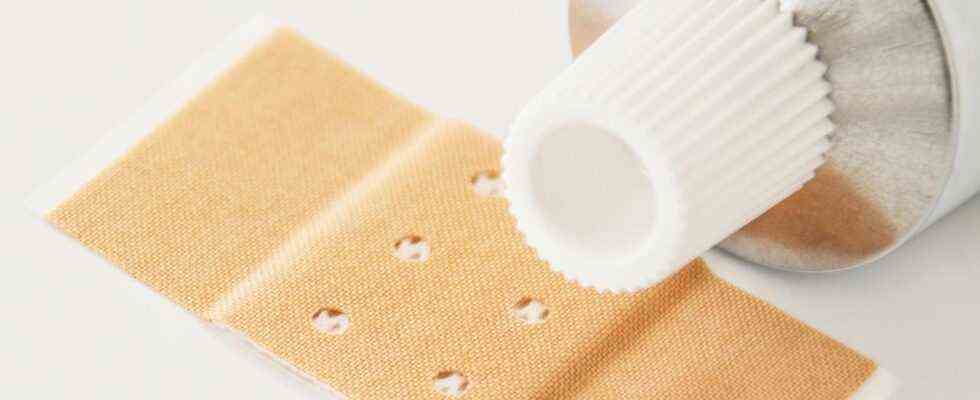Application and effect
Pull ointment against underground pimples, ingrown hairs and purulent abscesses
Pull ointment has an anti-inflammatory and sebum-reducing effect
© Santje09 / Getty Images
Ordinary pus pimples are easy to squeeze out and heal on their own. However, if there is a deeper inflammation under the skin, a painful infection can result. At this point, pulling ointment is a tried and tested home remedy.
Draw ointment is usually made from shale oil and contains ammonium bituminosulfate: an antibacterial, anti-inflammatory and blood circulation-enhancing agent. But what is even more important: It accelerates the healing process by literally “pulling” the focus of inflammation to the surface of the skin so that the pus can drain away more easily. Pull ointment can therefore be used primarily to treat mild inflammations (such as pimples under the skin and ingrown hairs), but also for purulent abscesses – with the latter, however, you should pay attention to a few important points. Which these are and how to use the ointment correctly is summarized in more detail below.
Mode of action: This is what a pull ointment promises
Regardless of which ointment you choose – the effect always remains the same. A popular classic is Ichtholan: It softens the skin and makes it permeable so that the pus can drain away. At the same time, it has an anti-inflammatory and antibacterial effect on the infection. In other words, not only the focus of inflammation is combated by the treatment, but also the spread of the germs it contains. In addition, the pull ointment also has a pain-relieving function and alleviates the itching. And that’s not all: Ichtholan stimulates blood circulation to speed up the healing process. The same applies to other manufacturers such as Winthrop or Infectopharm, who use the same active ingredient (ammonium bituminosulfonate) in their ointment. They all offer their products in two different strengths: 20 percent and 50 percent.
Depending on how advanced the inflammation is and how deep it is under the skin, a lighter or stronger dosage of the pull ointment is recommended.
How to properly apply a pull ointment
With a pull-ointment, slight inflammations such as underground pimples, ingrown hairs and even razor pimples can be treated – or even minor injuries under the skin such as splinters. In the initial phase, one is enough 20 percent ointment is already over, but if the infection is stronger, it is better to use a higher concentration of active ingredient. It is best to proceed as follows when applying:
Apply the black pull ointment thinly and selectively with a cotton swab to the inflamed area.
Put a large band-aid over the wound so that the ointment does not stain your clothes or bedding.
Wash your hands after and before each treatment so that you do not transfer new germs to the wound.
Change the bandage daily and wash off the remnants of the pulling ointment with warm water before using new ones.
Repeat this process several times as it can take three to five days for the pus to surface.
Important: The pull ointment should never come into contact with your mucous membranes or your eyes.
Treating abscesses: what to keep in mind
Basically, pull ointment is also suitable for treating abscesses. This is a collection of pus under the skin, around which a capsule-like membrane forms, which is supposed to protect the body from infection. Pus abscesses can form anywhere: under the armpits, in the genital area or on the buttocks. Therefore, they are very uncomfortable, painful – and dangerous if left untreated and result in blood poisoning. It is therefore advisable to consult a doctor without fail if:
- the abscess is particularly large or deep under the skin
- the abscess is on the face or near the head
- the abscess is badly infected and causing great pain (an antibiotic may be needed)
If, on the other hand, the abscess is still in its early stages, you can treat it with a Pull ointment Treat as described above so that the pus can drain away faster.
Does train ointment have any known side effects?
Normally, the use of pull ointment is completely safe – but it can happen that some people have an allergic reaction to it: If your skin starts to burn or itch after the treatment, you should wash the ointment off again immediately with warm water. It is not recommended if you are pregnant or breastfeeding. If in doubt, you can also ask your doctor for advice in advance. Otherwise there are no known side effects of pull ointments.
Note: This article contains general information and is not a substitute for a doctor’s visit.
You might also be interested in:
This article contains so-called affiliate links. Further information are available here.

